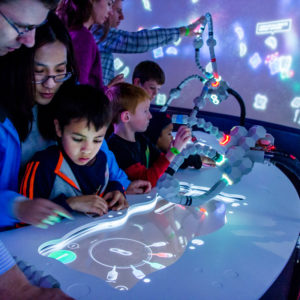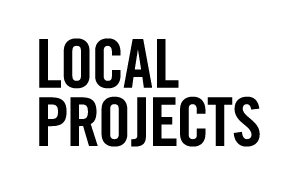

View Case Study
We created the world's first synthetic biology learning lab in a museum
Local Projects worked with the Tech Museum of Innovation in San Jose, CA to develop the BioDesign Studio which opened on March 18, 2016.
The goal of the BioDesign Studio was to design interactive exhibits to demystify one of the least-understood and most controversial topics in modern science: synthetic biology. The client outlined the basic flow of the gallery, splitting exhibits into two groups. The first group was comprised of experiences designed to familiarize visitors with the fundamentals of biology, and the second group introduced visitors to more complex concepts from synthetic biology.
The Tech Museum serves a diverse audience. The exhibits were designed to be educational, rich, and engaging for children, teenagers, and adults. The Tech Museum is also a popular destination for school field trips, thus had to be designed as teaching tool for large groups of children.
In the first exhibition, Pattern Design, visitors take control of the rules behind nature’s emergent systems to design new coat patterns on life-size animal sculptures. In the second exhibition, Creature Creation, visitors create and test new virtual lifeforms by snapping together physicalized pieces of DNA. Sensors in the magnetic DNA “blocks” sync with screens at stations to provide real-time feedback on the genetic design in progress.
In the Living Colors Lab, projection mapping guides visitors through a real-world lab experiment mixing DNA into bacteria to create new glowing colors. A wall behind the workbench with 1,493 glowing LED petri dishes visualizes results from the experiment in real time and highlights newly discovered colors.
- Why this project is worthy of a UX Award:
Through the BioDesign Studio, Local Projects successfully created a “bio-sandbox” for experimentation and exploration of a new and unfamiliar medium through intuitively navigable, fun, and inspiring interfaces. The exhibits provide visitors — especially younger ones — with an opportunity to get their hands on a novel set of tools for exploring synthetic biology, and exceed the museum’s standards of success: “To inspire the innovator in everyone.”
The BioDesign Studio represents several innovations in hybrid physical
/ digital interaction approaches. The Living Colors Lab’s
augmented-reality workbench opens up an otherwise complex biology
experiment to wider (and younger) audiences by projection-mapping the
exact step-by-step procedure on top of the actual tools and materials.In the Creature Creation Station, the tangible DNA building blocks
represent how close collaboration between user-experience designers, software developers, and hardware engineers can yield one-of-a-kind visitor experiences that blur the lines between physical and digital.
The result leverages the affordances of a museum environment to create collaborative multi-sensory experiences that can’t be replicated on a phone or in a web browser. - Submitted By: Local Projects
See More 2017 Submissions >>